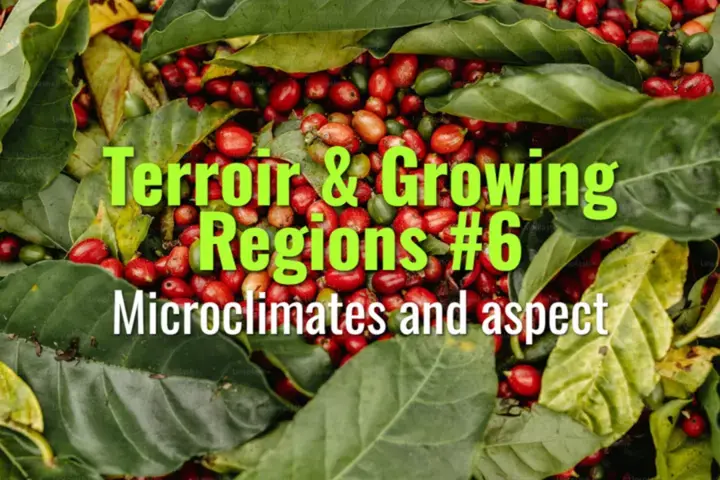Microclimates and aspect
This topic explains how microclimates and slope aspect influence coffee cultivation, showing how subtle variations in environment shape yield, quality, and terroir expression.
- Coffee Basics Nerds
- 2 min read
Article 6 of 12 in Terroir & Growing Regions/

Microclimates in Coffee Farming
- Definition: A microclimate is a localized climate condition that differs from the broader regional climate.
- Influences: Topography, altitude, vegetation, water bodies, and wind patterns.
- Impact on coffee: Determines temperature, humidity, and rainfall patterns, directly affecting flowering, maturation, and cup profile.
Examples of Coffee Microclimates
- Valley farms: Protected from wind, with higher humidity and cooler nights.
- High ridges: More sunlight, drier air, faster cherry ripening.
- Proximity to forests: Increased shade and biodiversity.
- Near lakes/rivers: More humidity, moderated temperatures.
Aspect (Slope Orientation)
- Definition: The compass direction a slope faces.
- Sun-facing slopes (north-facing in Southern Hemisphere, south-facing in Northern Hemisphere):
- Receive more direct sunlight.
- Faster cherry ripening, higher yields, but lower acidity and complexity.
- Shaded slopes (opposite orientation):
- Cooler microclimate, slower maturation.
- Denser beans with more acidity and flavor complexity.
- East-facing slopes: Morning sun, reduced afternoon heat stress—often ideal for quality.
- West-facing slopes: Afternoon sun, hotter and drier, risk of stress and over-ripening.
Interactions Between Microclimate and Cultivar
- High-quality cultivars (e.g., Gesha, SL28) benefit from cooler microclimates with slow ripening.
- Hardy cultivars (e.g., Catuaí, Castillo) can perform well in warmer, sunnier aspects.
- Farmers match variety choice to microclimate for optimal yield and quality.
Agricultural Implications
- Site selection: Farmers choose slopes and valleys carefully to maximize terroir potential.
- Management practices: Shade trees, windbreaks, and terracing help regulate microclimates.
- Harvest timing: Microclimates create staggered ripening, requiring flexible harvest schedules.
Lasting Importance
Microclimates and aspect create the fine-grained terroir that makes one farm—or even one slope—taste different from another. They shape coffee’s diversity, proving that flavor is a product not only of cultivar and soil, but also of subtle environmental nuances.